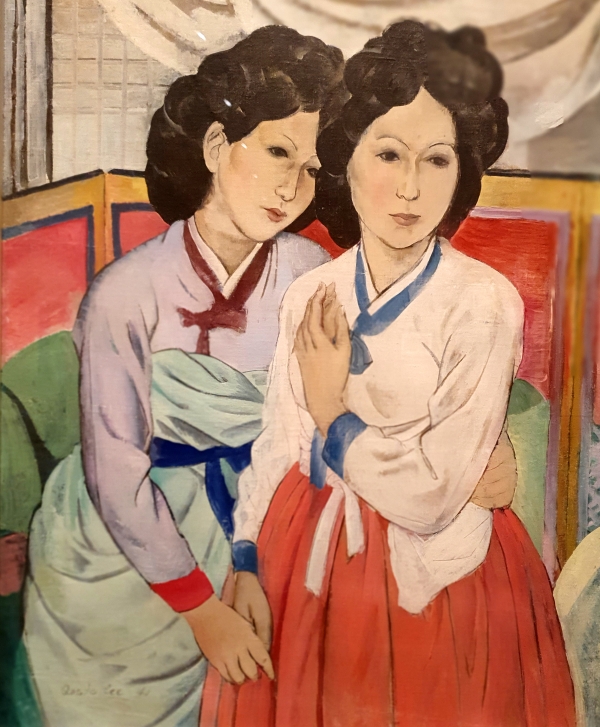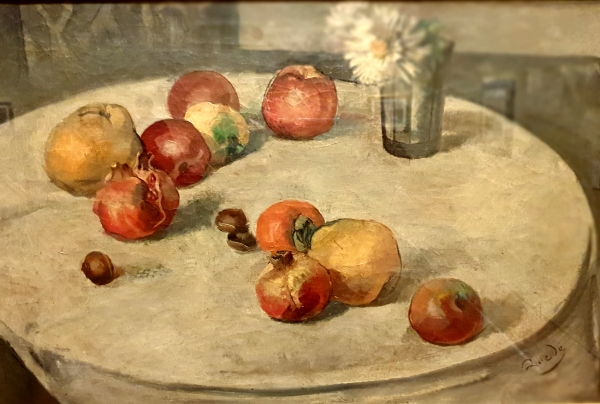Lee Qoe-de and Daegu

◆ This article was written for foreigners in Daegu and citizens of all countries around the world who are interested in Korean Art. (이 기사는 대구 주재 외국인 및 한국 미술에 관심 있는 세계 모든 국가의 국민들을 위하여 작성한 것입니다.)
Lee Qoe-de(이쾌대 : 1913-1965, Chilgok/Daegu)
"If you can see through what's inside of people
and when the figure is on a piece of paper,
it's something that can be established forever."
In a written interview with Lee Myung-hak son of Lee Ju-young, "The Words of Lee Qoe-de," on November 22, 2010.
Born in Chilgok in North Gyeongsang Province, he graduated from Soochang Public School with Lee In-sung. In 1932, when he was a student at Hwimun High School in Seoul, he entered the Deikoku Art School in Japan. And He won prizes in the 'Harabatsu' and 'Nokposa' contests.
After graduating in 1938, he organized the Joseon New Artists Association with Lee Joong-seop, Jinhwan, and Choi Jae-deok and in 1941, held Donginjeon(group exhibition) in Tokyo and Seoul until 1944. After Korea's liberation in 1945, he opened the Seongbuk Painting Institute and taught art to his juniors until early 1950.
In 1947, He formed the Joseon Art and Culture Association, consisting of 18 people including Kim In-seung, Lee In-sung and Cho Byung-deok and four time of exhibitions of members' works were held until 1949. The representative works of this time are 「Distress」(1948) which is fishermen's the disastrous accident in Dokdo, 「Bagger」(1948) which showed us Human image of superman's will and 「Gunsang(A large group of people)Ⅰ- notification of liberation」.

In 1949, he participated in the 1st Korean Art Exhibition as a recommended artist of the Western Painting Part and submitted a still-life painting 「The Fruit of Autumn.」
Immediately after the Korean War, he participated in the South Korean Art Alliance People's Volunteer Army under the North Korean regime. And he became a prisoner of war and faced the ceasefire at the Geoje camp. At that time, he made a book to teach Lee Ju-young the basics of anatomy. However he transferred to North Korea during the inter-Korean prisoner exchange. He was elected as an artist of at the Construction Works Center and an artist of at the Joseon Artists Alliance in 1954. After the North Korean Civil War and he was appointed as an executive to the oil department of the Joseon Artists League in 1957.
Lee Qoe-de acted during the Korean Civil War and Japanese colonial era that are the most tragic era in Korean history. And he is an excellent artist who shows the themes and emotions of the time. He pursued local themes that modernized traditional painting or an epic paintings that embodied the national spirit. He was a painter who was interested in revealing the identity of the people through his own interpretation of painting techniques and local colors, such as using traditional Korean costumes or using descriptive techniques based on the colors and characteristics of Oriental paintings.
He died in 1965 when his stomach perforation worsened at the age of 53.

Port - one of the most representative works : 1960, 33.5×44.5cm, oil on canvas, Lee Kun-hee Collection. Reporter Kim Young-chang
Lee Qoe-de also used Korean painting techniques and traditional materials before his defect to North Korea, or demonstrated maturity in human representation. He was very interested in revealing his national identity and in the late 1940s, he painted masterpieces such as the 「Gunsang (A large group of people)」series. Although his activities after his defect to North Korea are not known in detail, works on historical themes such as the March 1st Movement and simple daily lives. This work is a welcome reminder of his activities in North Korea and still shows his mature skills.


